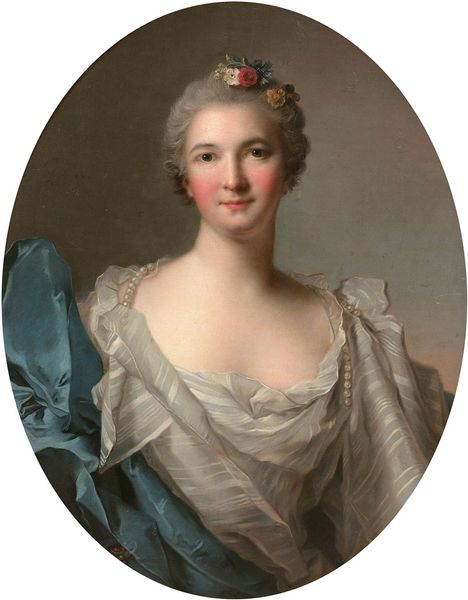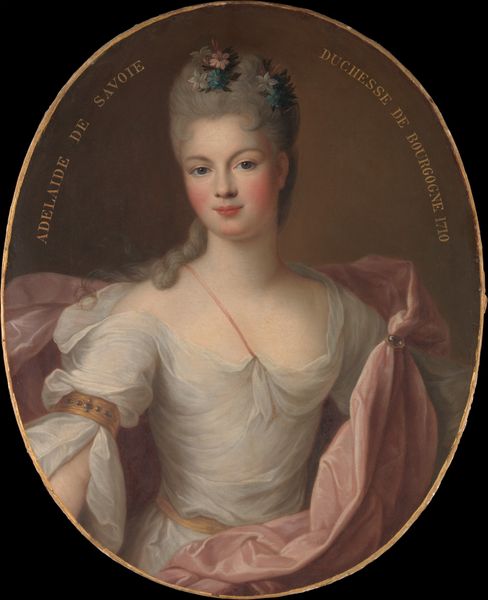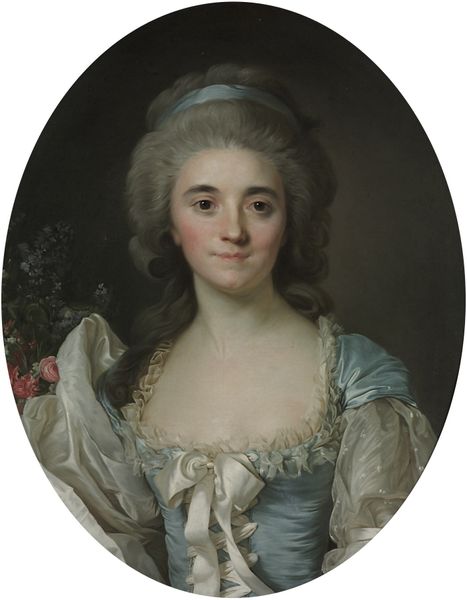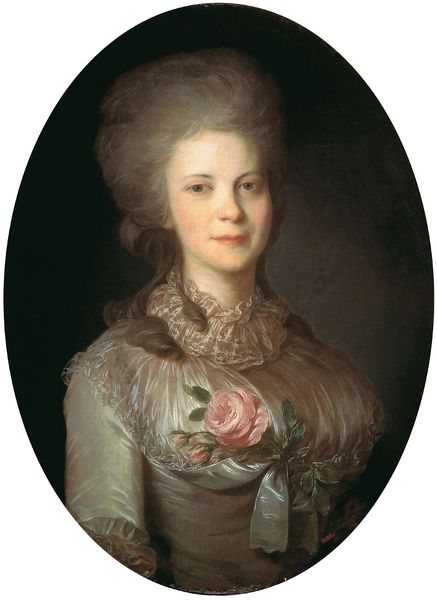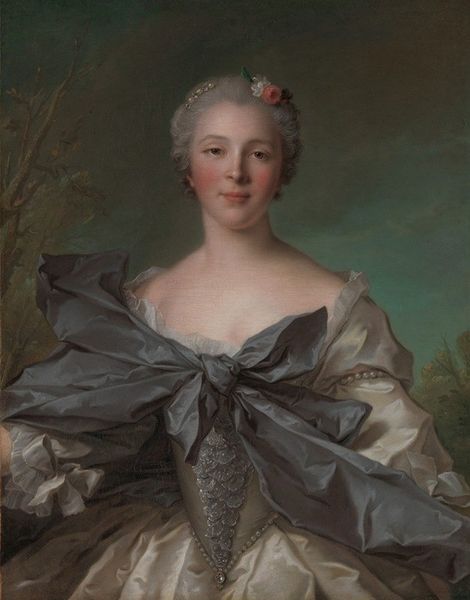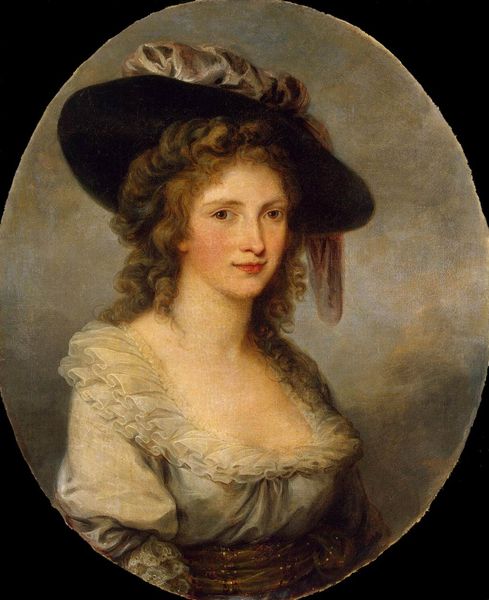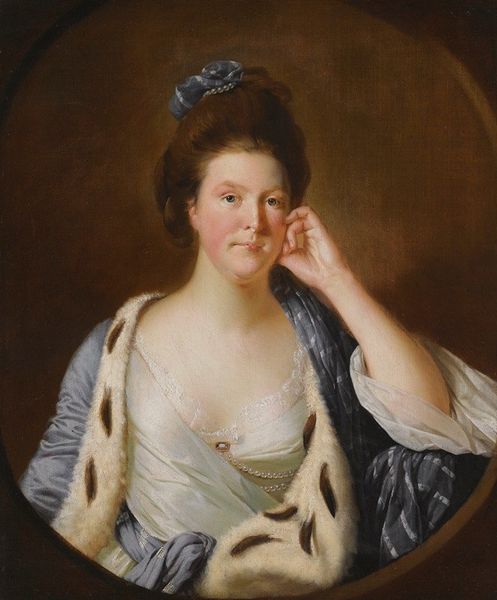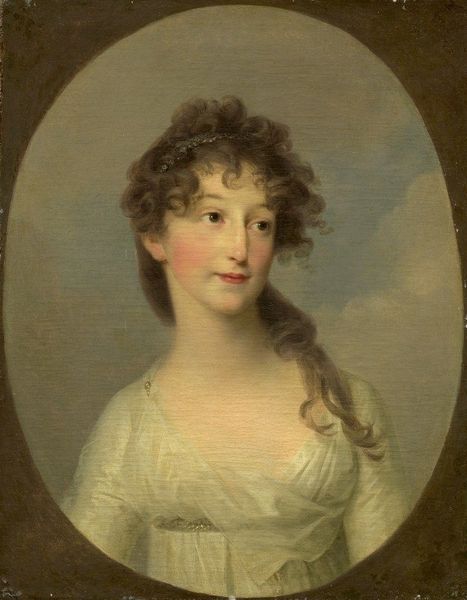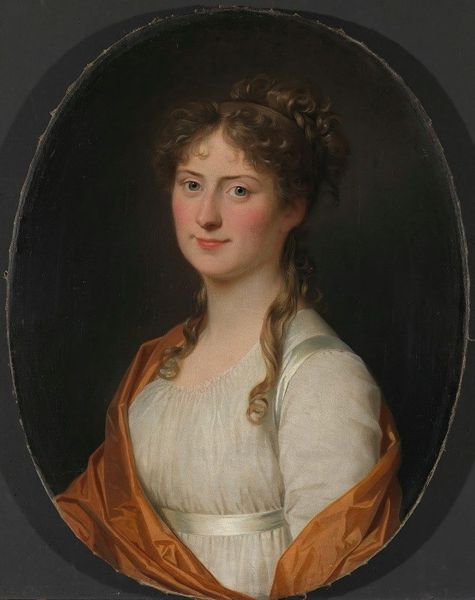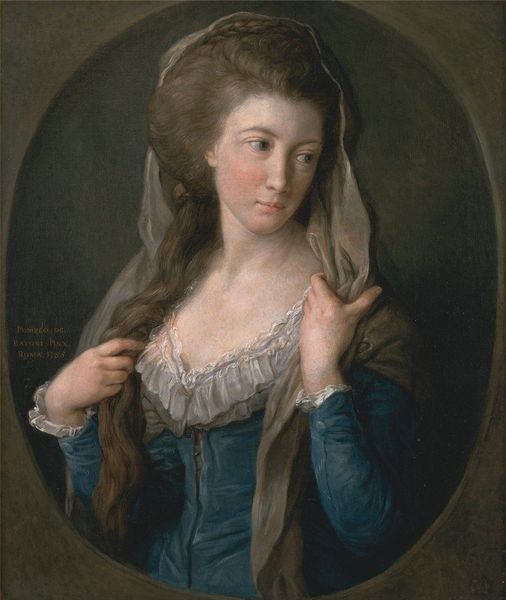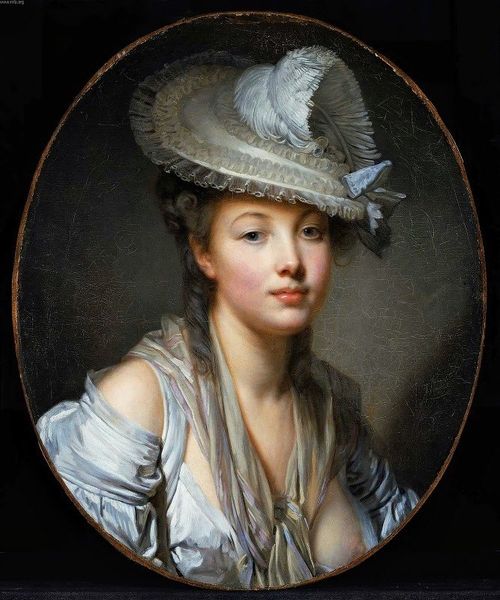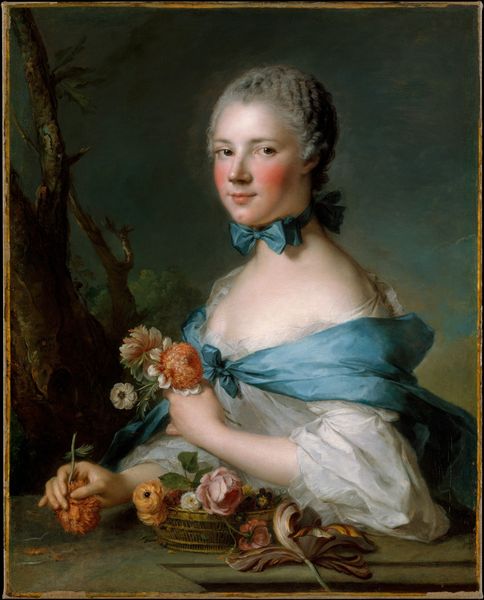
painting, oil-paint
#
portrait
#
painting
#
oil-paint
#
form
#
history-painting
#
academic-art
#
rococo
Copyright: Public Domain: Artvee
Curator: Standing before us is "Portrait de femme," attributed to Jean-Marc Nattier and estimated to be painted between 1685 and 1766. It's an oil painting that exemplifies Rococo style. Editor: It's remarkably soft. The brushwork seems delicate, almost ethereal. I’m struck by how the textures are suggested; you can practically feel the silk. Curator: Nattier's portraits were often celebrations of aristocratic women, capturing not only their likeness but also projecting ideals of femininity and status. There is an intriguing dialogue here about beauty, power, and representation of women in art history, especially considering gender roles and social constraints during that era. Editor: Precisely. Looking closely at the drape of the gown, the way the light catches the fabric—it speaks to the opulence and labor involved in creating these luxurious textiles. These materials weren’t easily sourced or made, adding to her sense of nobility. We cannot separate the social standing of the subject from the materiality on display, a relationship inherent to the artistic product. Curator: And her gaze? It’s both alluring and distant, suggestive of an inner world beyond the trappings of wealth. I'm prompted to examine how societal expectations shaped the identities and self-perceptions of women during this time. What does it mean to perform the role of woman in this time? How much agency did women have? Editor: Agreed, though I also can’t help but admire Nattier's skill in translating these materials. Oil paint transforms the everyday into a commodity laden with visual interest and monetary worth. How the availability of materials themselves influence aesthetic decisions. Curator: Understanding the interplay of representation, gender, and historical power structures enables us to analyze not only the artwork itself but also the socio-political environment that it reflects and reinforces. We can understand it by considering the role and the expectations put onto aristocratic women in eighteenth-century France. Editor: Absolutely. Analyzing Nattier’s technique in crafting these materials illuminates their perceived importance in the visual rhetoric. Curator: Thinking about the historical context deepens the viewers appreciation. Editor: Agreed. Analyzing these elements is crucial for getting at the rich complexities on display here.
Comments
No comments
Be the first to comment and join the conversation on the ultimate creative platform.
